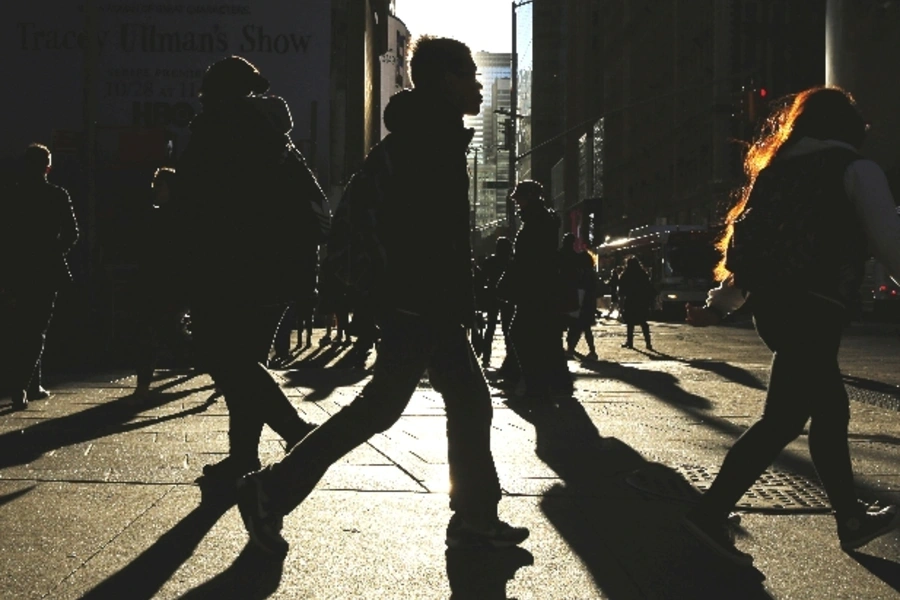Red States and Green Cities: Predictions for Trump-Era Climate Action

Jennifer Wilson is a research associate for national security at the Council on Foreign Relations.
President-Elect Donald Trump’s reported nomination of Scott Pruitt to head of the Environmental Protection Agency (EPA) indicates that his anti–climate change rhetoric was not just campaign bluster. Pruitt, who has a history of fighting EPA regulations, dims any optimism that Trump would take environmentally responsible action to reduce U.S. greenhouse gas emissions. While he seemed to have walked back his opposition to the historic climate deal reached in Paris last year, saying that he had an “open mind” on the accord, Trump’s EPA pick seems more in line with his campaign promise to “cancel” the deal.
More on:
As president of one of the 196 signatory countries, Trump will lack the authority to cancel the internationally-agreed upon accord, but he can withdraw the United States from it. However, because of the lengthy and likely controversial process of withdrawing from the agreement or its underlying treaty, the UN Framework Convention on Climate Change, Trump is more likely to just refuse to honor the commitments made under the deal. In that case, the Trump administration will fail to take the steps necessary to meet the target emissions reductions. As the United States accounts for 16 percent of global emissions, second only to China, this failure will make it even more likely that the earth’s overall average temperature will rise to potentially disastrous levels. In addition, a U.S. failure to honor the Paris accord may invite other signatories to balk at their own commitments.
Former New York City mayor Michael Bloomberg has responded to Trump’s climate denial by promising that U.S. cities could act to combat climate change should the federal government fail to do so. Bloomberg recently wrote that he would “recommend that the 128 U.S. mayors who are part of the Global Covenant of Mayors seek to join” the accord in the place of the United States.
While the constitutional authority of cities to formally join such an international agreement is dubious, this response would not be the first time state or local governments adopted international climate standards when the federal government failed to do so. In fact, in 2005, Bloomberg was one of the 132 mayors who pledged to meet the emissions reduction requirements of the Kyoto Protocol when the Bush administration rejected the agreement. States have also adopted measures far more ambitious than those enacted by Congress, including renewable energy requirements for privately-owned utilities and regional carbon-trading arrangements.
Cities, with their high population density, centers of industry, and streets clogged with cars and trucks, are major sources of greenhouse gas emissions. Local measures to reduce emissions—such as transitioning to renewable energy sources, instituting effective recycling programs, and installing bike lanes—can have a powerful impact on global climate change. The success of these efforts, however, largely depend on support and funding from state leadership. Urban-led efforts to reduce carbon emissions are therefore likely to remain limited, thanks to significant demographic shifts in the past twenty years.
As this year’s election results demonstrate, the political chasm between urban and rural Americans has grown wider. In 2016, 82 percent of urban counties, representing 160 million people, voted more Democratic than in 2004. On the other hand, 89 percent of medium and small counties, representing 67 million Americans, voted more Republican. Such increased polarization calls into question the success that mayors can expect if they do not have the support of their respective state governments. While 67 percent of major U.S. cities have Democratic mayors, 69 percent of state legislative chambers—where anti-climate change legislation originates—are Republican-controlled, and 56 percent of governors are Republican. Moreover, state leaders who oppose environmental regulations will have an ally in Trump’s EPA administrator, a staunch advocate of states’ rights to resist climate change regulations.
More on:
States have long adopted policies at odds with federal guidance, including regarding healthcare access, marijuana use, and marriage equality, but with climate change the stakes are considerably higher. Over the next four-to-eight years, efforts to prevent an eventual global cataclysm will buck against this era’s defining political divide. While a dark prospect, some hope can be found in that the universal effects of climate change—from rising coastlines that threaten to drown cities, to extended droughts that could reduce crop yields—may spur support for environmental policies across the rural-urban divide. If not, then urban efforts to comply with the Paris agreement, while necessary to mitigate the ever-growing menace of climate change, may widen the already gaping chasm between urban and rural Americans. The implications of a divided polity may very well jeopardize the long-term climate change solutions on the federal level that are necessary to literally save the planet.
 Online Store
Online Store
